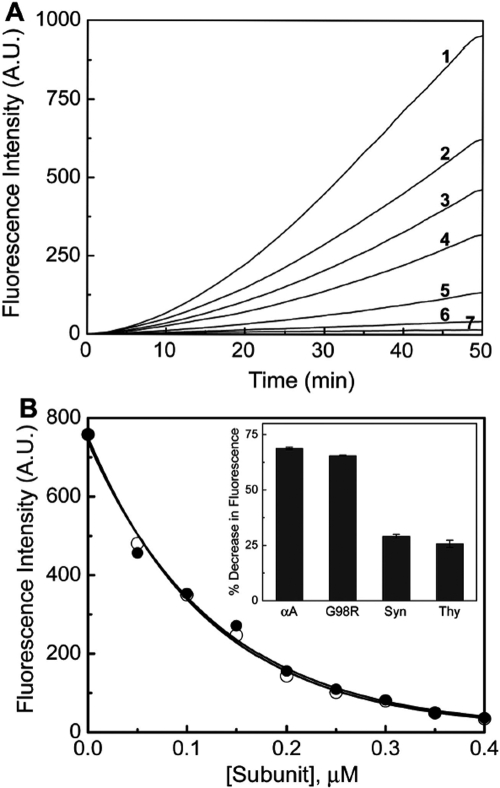Figure 3.
Redox-silencing of Cu2+ by αA-crystallin and G98R αA-crystallin. A: Cu2+-ascorbate-mediated OH˙ generation in the absence (curve 1) and in the presence of 0.05, 0.1, 0.15, 0.25, and 0.4 μM αA-crystallin (curves 2–6). Curve 7 shows the trace of blank sample (in absence of protein and Cu2+). B: A decrease in coumarin fluorescence intensity (reflecting the inhibition of OH˙ generation) is shown after 41.6 min as a function of concentration of αA- (○) and G98RαA-crystallin (●). Inset shows the percent decrease in fluorescence in the presence of 3 μg/ml α-crystallins, α-synuclein (Syn), and thyroglobulin (Thy). The results indicate that G98R mutation in αA-crystallin does not affect its redox-silencing property. Error bars for four experiments are also shown.

